Drama in the court: ICTRep presents 'Witness for the Prosecution' at the Historic Sedgwick County Courthouse
The Wichita theater company uses a real courtroom to dramatic effect in the Agatha Christie legal thriller. The nearly sold-out show runs through April 6.
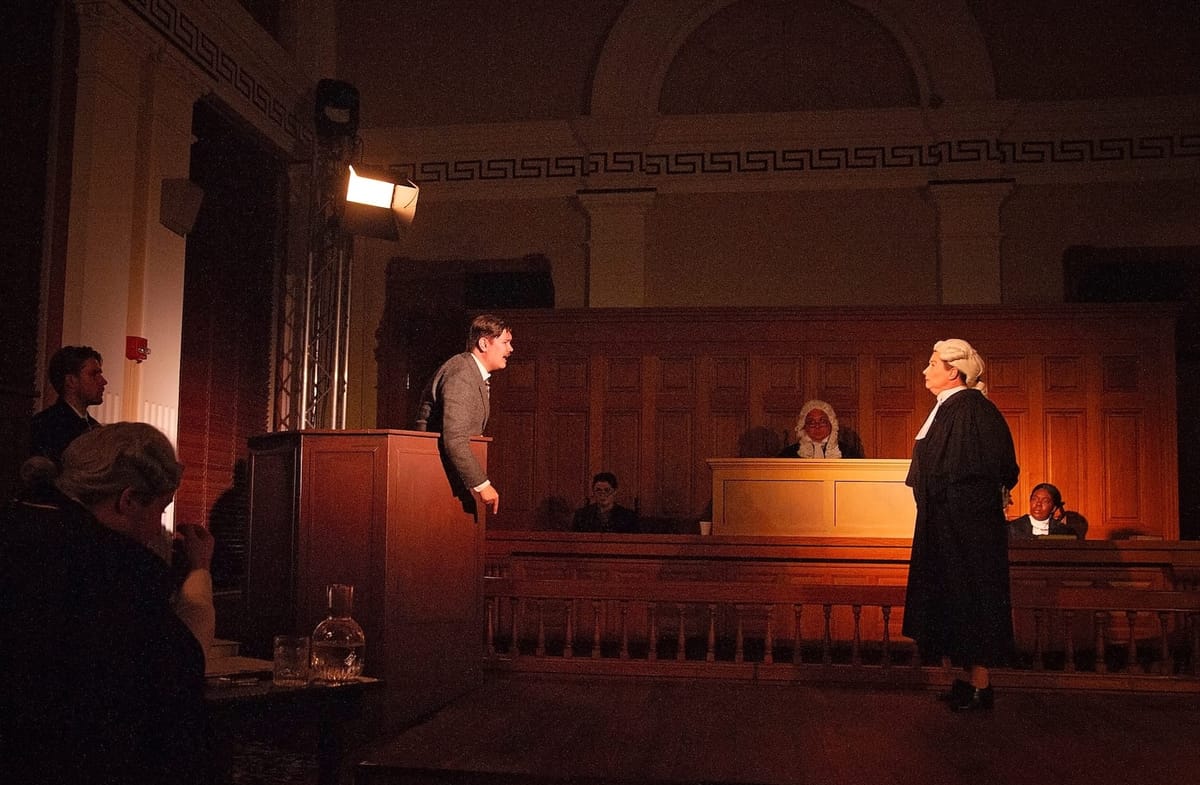
ICTRep has moved a classic courtroom drama into an actual courtroom. The gamble of performing in a nontraditional space pays off because the director and production team let the room do a great deal of the work.
“Witness for the Prosecution,” by Agatha Christie, was first produced in London in 1953. The ICTRep production takes place in the restored courtroom at the Historic Sedgwick County Courthouse, 510 N. Main, in downtown Wichita. Most of the audience sits in the courtroom gallery, though some sit in the jury box, becoming part of the action as actual jurors.
The story unfolds as barrister Sir Wilfrid Robarts (Matthew Gwinner) takes on the defense of accused murderer Leonard Vole (Hagan Simmons). Robarts faces his courtroom adversary, Helena Myers (Michele Janssens) in a courtroom presided over by Justice Wainwright (Jordan Sickman), with gripping testimony provided by the deceased’s housekeeper (Vonda Newby-Schuster) and the key witness for the prosecution, Romaine Vole (Amy Sheldon Loucks). Red herrings, allegiance switching, and twists continue to the very end, and even for those who know what is coming, there is great fun in seeing how this cast arrives there.
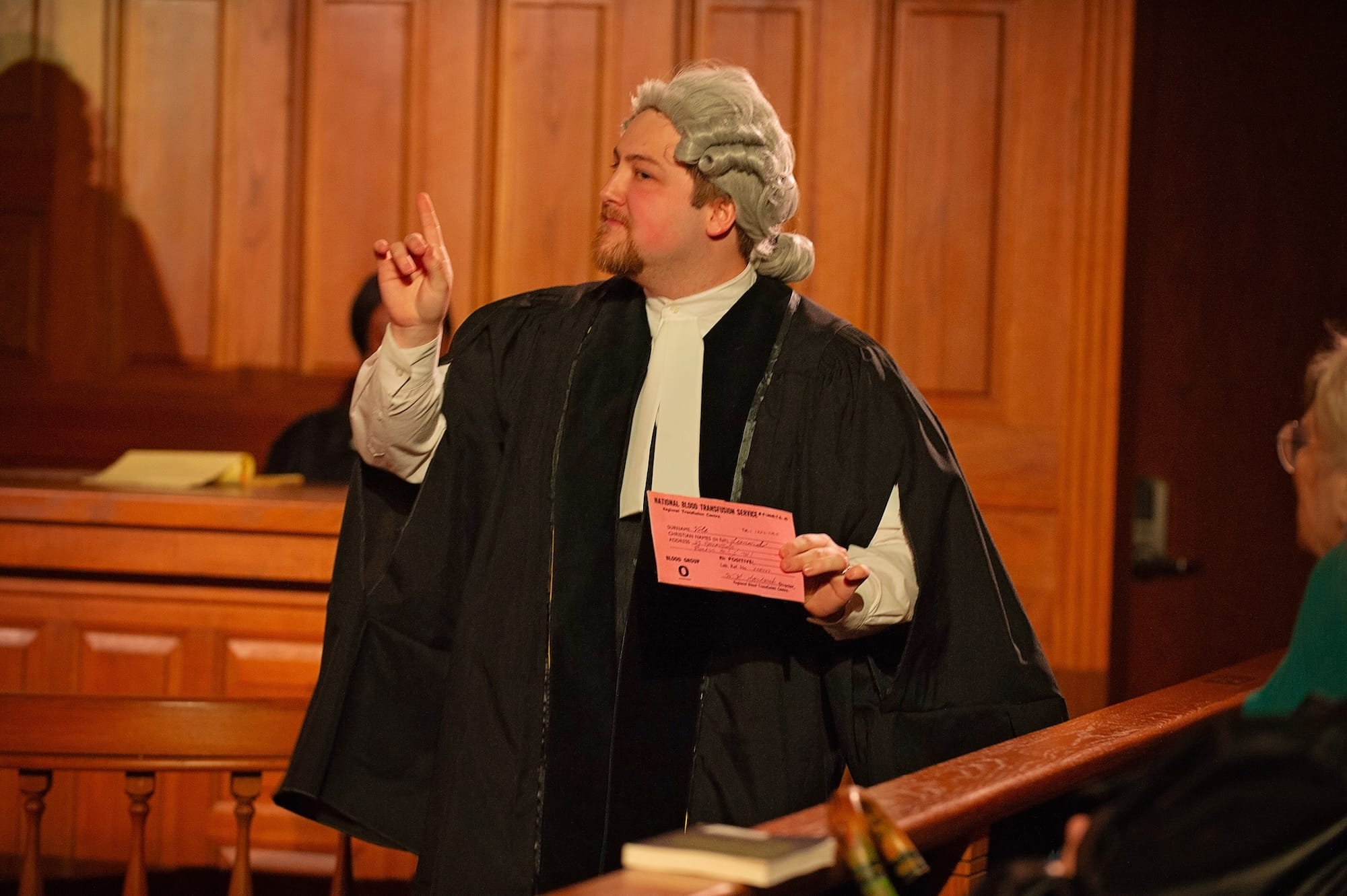
ICTRep recommends that the audience come early to navigate the trip to the third floor courtroom. Those who do also get to watch the clerk of the court (Jeneé Saffold) explain to the “jury” what to expect. On Saturday, the jurors responded in a variety of ways, some nodding intensely, one leaning back as far from the clerk as he could, and several giggling and taking selfies. Whatever Saffold says seems to work. The jury becomes a character — or rather 12 characters — in the courtroom scenes, and watching jurors respond to discrepancies in testimony or emotional outbursts by those in court magnifies the impact.
The scene and lighting design by Julie and Stan Longhofer are thoughtfully unobtrusive, allowing the space to be fully used as itself. Lights primarily come from four corners. A stark exception is an outdoor scene in the dark fog; the chilly room (sweaters recommended) reinforces the effect. A version of Lady Justice looks down over everything.
Sign up for our our free email newsletters
Stay in the know about Wichita's arts and culture scene with our weekly news & event digests.
No spam. Unsubscribe anytime.
Director Paula Makar helps the actors use the space effectively. They are often placed in corners, presumably for optimal visibility. This allows for long crosses across the stage in moments of confrontation and huddling up in corners for more intimate moments. The angles and the audience proximity mean that sharp turns of the head and even sidewise glances are apparent. Janssens especially uses side-eye to sting, while Sheldon Loucks uses it to coldly assess. The space amplifies these actors’ subtle choices.
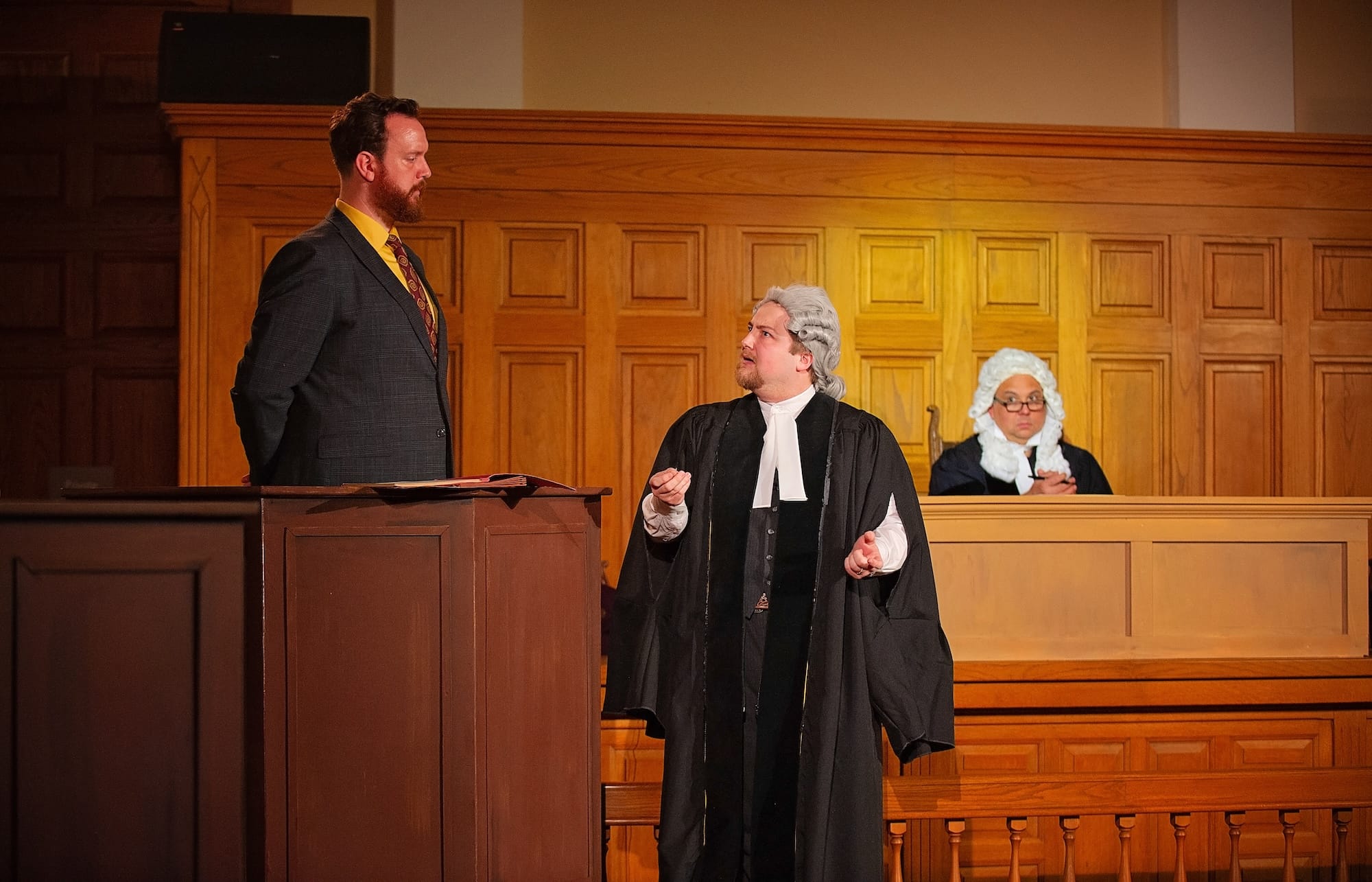
All we know about Myers, the prosecutor, is that defense barrister Robarts dislikes her mannerisms and courtroom technique and therefore especially enjoys besting her. Casting Janssens in the role, originally written for a man, adds a hint of gender dynamics. Janssens leans into the competition, reacting to Gwinner with a wrinkled nose and slow blinks while dominating the courtroom with a piercing, precise voice. Robarts, by contrast, believes himself to be a purist (“I only want the truth”) but seems to care most about winning.
As the accused man, Simmons keeps the audience guessing. Ranging from insincere to wrecked, it is easy to believe him as an emotionally needy man still trying to get a handle on life after the war. Robarts calls him “extraordinarily naïve” but also “shrewd,” and both come across. By contrast, Robarts calls the man’s wife, key witness Vole played by Sheldon Loucks, the “kind that would knife a man if he double-crossed her.” Vole is fully in control of herself, and perhaps of the situation. Sheldon Loucks uses silence exquisitely, as in a pause before intoning that “one can get tired of gratitude.”
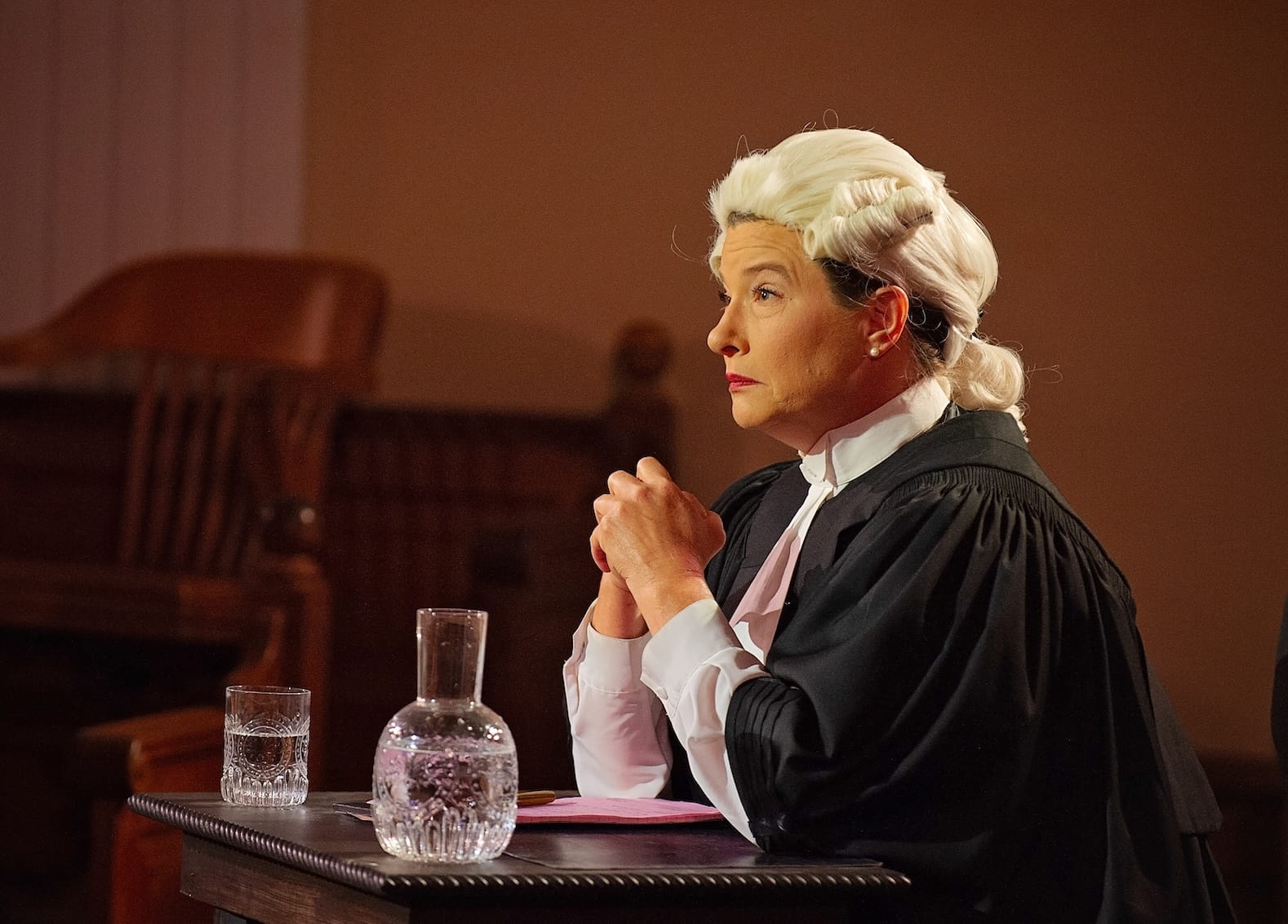
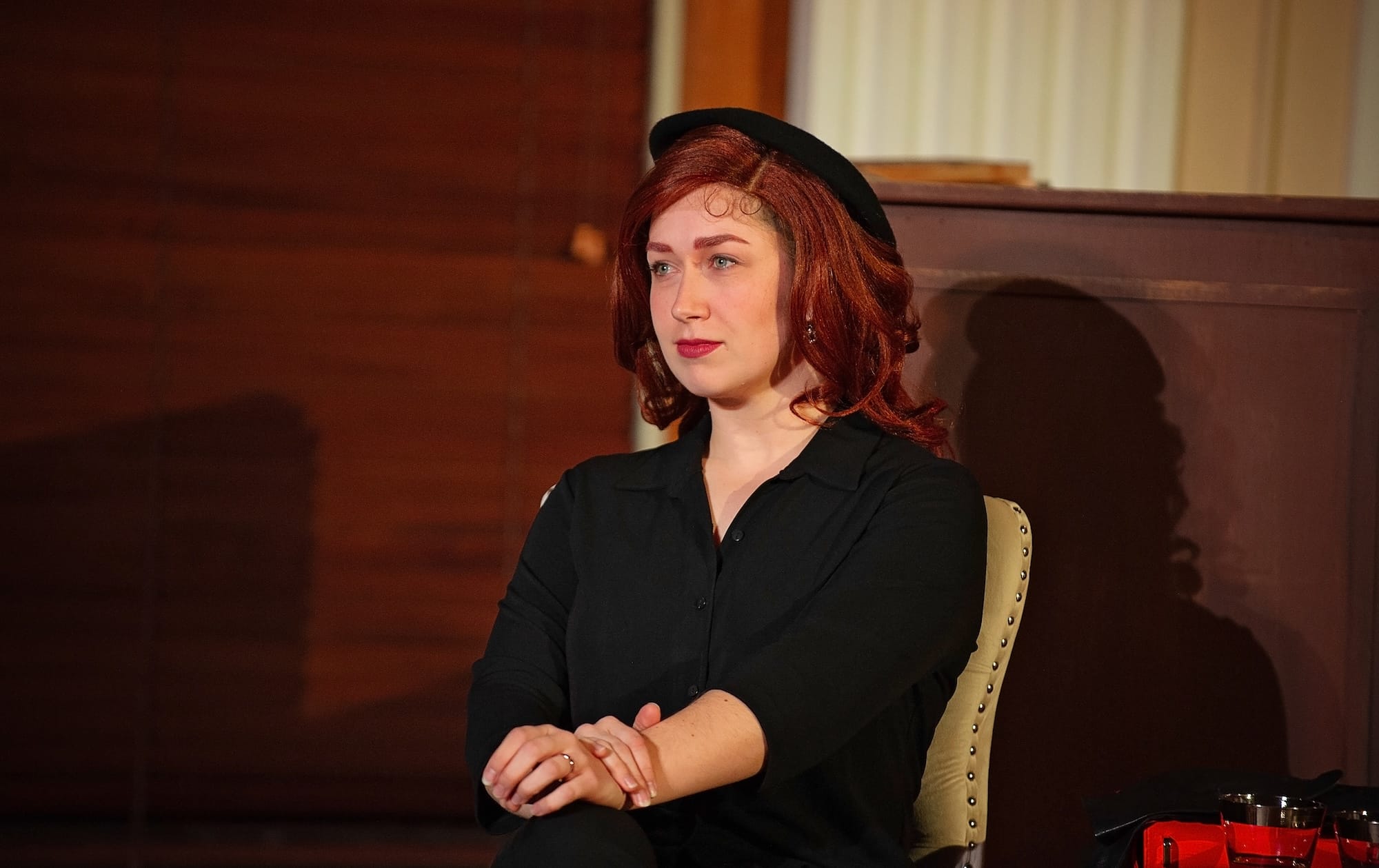
Both Michele Janssens (as prosecutor Helena Myers) and Amy Sheldon Loucks (as Romaine Vole, witness and wife of the accused) deliver precise performances. Courtesy photos by Jill Harper.
Winning performances by Sickman, Chelsie Penner as the typist, and especially Newby-Schuster in two contrasting roles contribute to the production's success.
The courtroom staging distracts in a couple of ways. It makes some moments difficult to hear: John Mayhew, played by Eddie Spurlock, is responsible for important exposition that does not all come out clearly. Similarly, when Sheldon Loucks tries for quiet intensity, sometimes all the audience gets is quiet. This means some of the character’s best lines (“Men, I often think, are very stupid”) get lost. Another challenge of the space is that actors who are showing natural reactions can pull focus from the main action simply because they are physically distant from it. This happens, for example, when Gwinner is reading a juicy newspaper article and when Simmons is in court.
Other cast members include Hunter Bartholomew, Chris Loucks, and Lydia Pirilli. Sydney Alder is assistant director, and Kirk Longhofer is sound designer.
Looking at ICTRep’s next season, other interesting possibilities for nontraditional spaces present themselves. Perhaps “A Jukebox For the Algonquin” will be played at a retirement community or “Silent Sky” at Lake Afton Public Observatory?
The Details
ICTRep presents “Witness for the Prosecution”
March 28-April 6, 2025
Seth Bate’s book “Winfield’s Walnut Valley Festival” was named a 2023 Kansas Notable Book and won the Tihen Book Award from the Kansas State Historical Foundation. In a previous century, Bate was a National Critics Institute fellow at the Eugene O’Neill Theater Center.
⊛ Off-Broadway, a Kansas playwright meditates on the labor that defines us
⊛ Wayne Gottstine is 'back in the fight'
⊛ Star of MTW's 'Gypsy' finds purpose both on stage and from behind a pulpit
⊛ 'You don't have to give up': Clark Britton on making art into his 90s
⊛ Bygone Friends University museum housed curious collections
The latest from the SHOUT
 The SHOUTKsenya Gurshtein
The SHOUTKsenya Gurshtein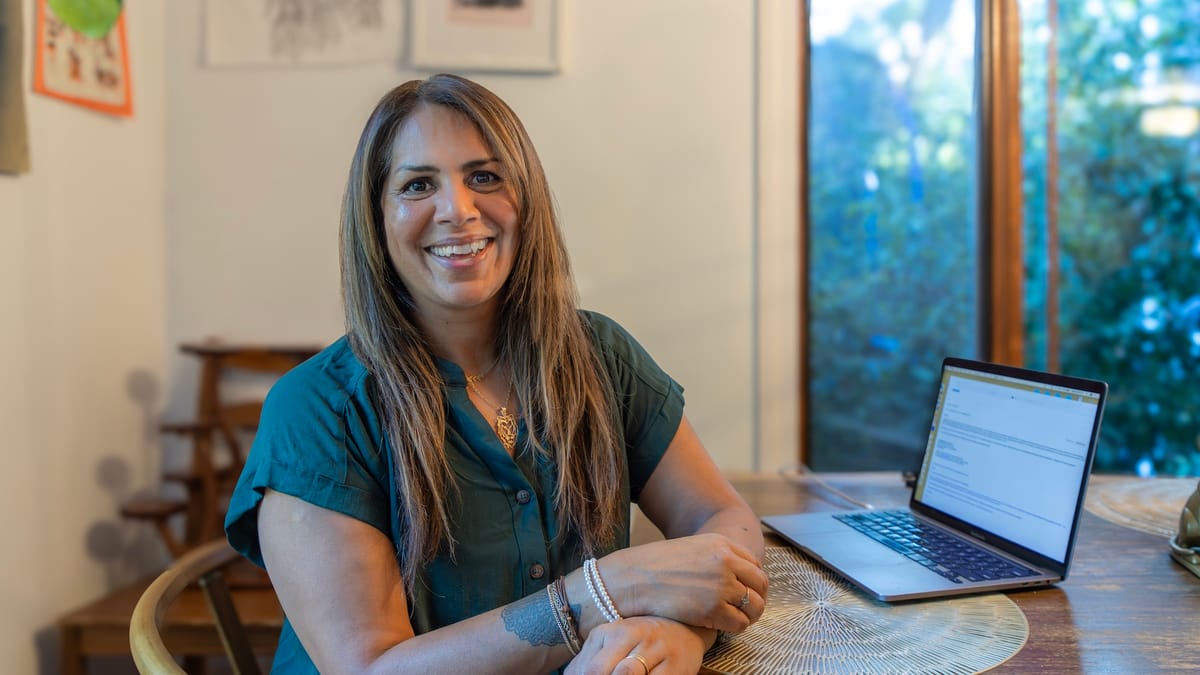
 The SHOUTConnie Kachel White
The SHOUTConnie Kachel White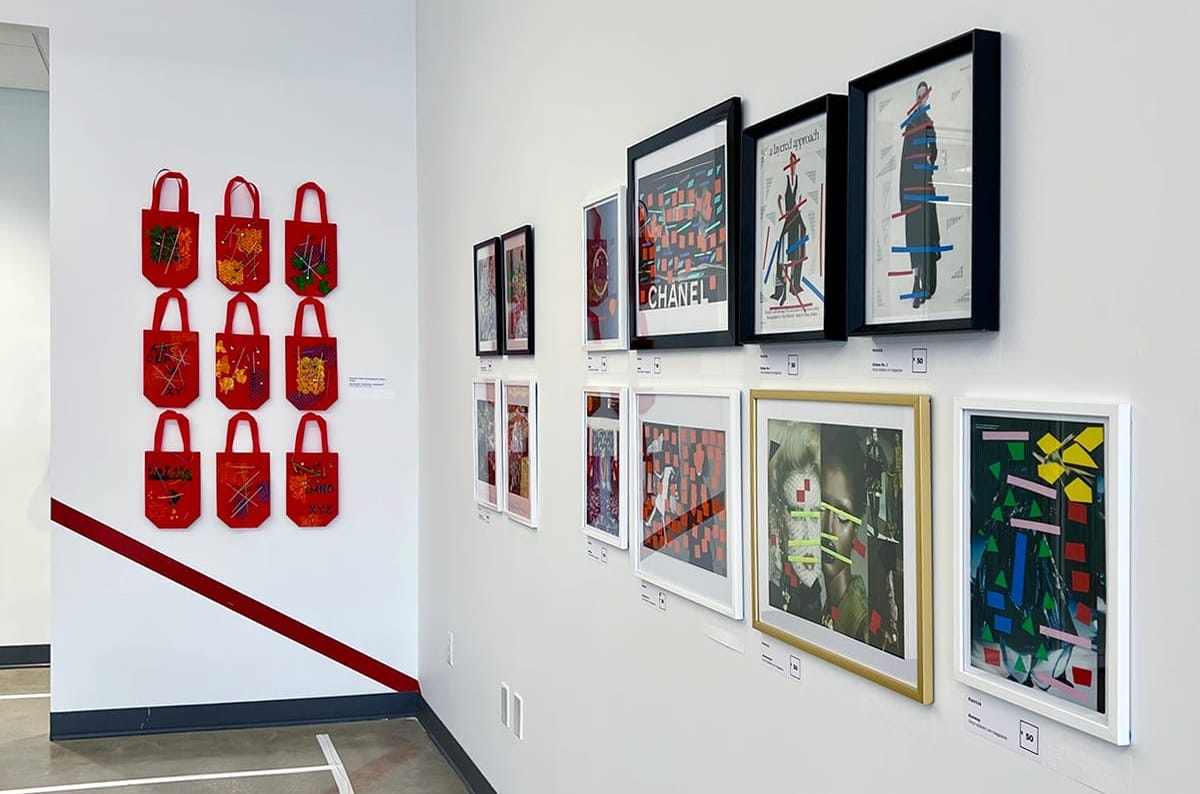
 The SHOUTShelly Walston
The SHOUTShelly Walston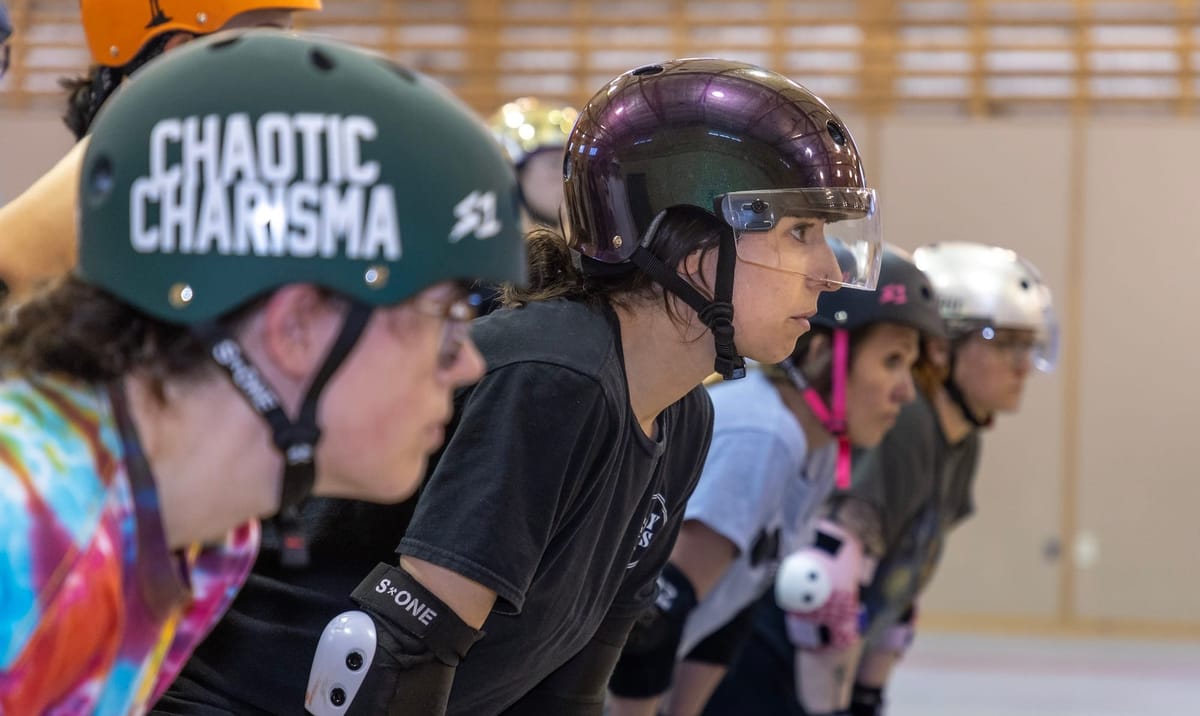
 The SHOUTTrace Salzbrenner
The SHOUTTrace Salzbrenner
